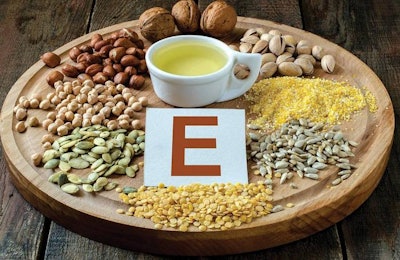
Having discussed vitamin A in a previous blog, I received a considerable number of responses (thank you!), and in some of them, there were questions about vitamin E. As you recall, vitamin E was one of the vitamins affected by the temporary availability issue that impacted its short-term price. Yes, vitamin prices go up and down. This is the nature of business, and it is not going to change. But the value of the ingredients (those of good quality) will remain the same for animals that need them in order to be productive, healthy and profitable.
So, when vitamin E's price increased and enough volumes were not available, consultants like me everywhere were asked about ways to resolve the issue. One of the solutions has been to reduce excesses, for which we are all guilty, because let’s admit it, we depend on the good properties of vitamin E to resolve issues we have no real answers about. Even veterinarians do it, so nutritionists should be excused, too! Another solution offered as a working hypothesis — one must always test such ideas — was to increase other antioxidants. We all know vitamin E is a powerful antioxidant, and not the only one; the organism uses a myriad of them, some internally produced, others from feeds.
Vitamin prices go up and down. This is the nature of business, and it is not going to change.
Many compounds were discussed, like polyphenols, flavors, phytogenics, you name it … but it was all a working hypothesis. Desperate times need desperate measures, but the point is that based on decades of human and animal science research, you cannot just replace vitamin E due to its many other essential functions, apart from being an antioxidant (in the next few weeks you will read more about vitamin E and other vitamins in relationship to immunity when less antibiotics are used; stay tuned).
Back to the original question: It still remains an academic question whether other compounds can replace certain functions of vitamin E. In the mean time, and for all practical reasons, prices and quantities have returned to normality, and as such, vitamin E levels should be restored. Whether vitamin E levels need to be re-evaluated is a different discussion that needs to be done with a clear mind, and never under price pressure.

















